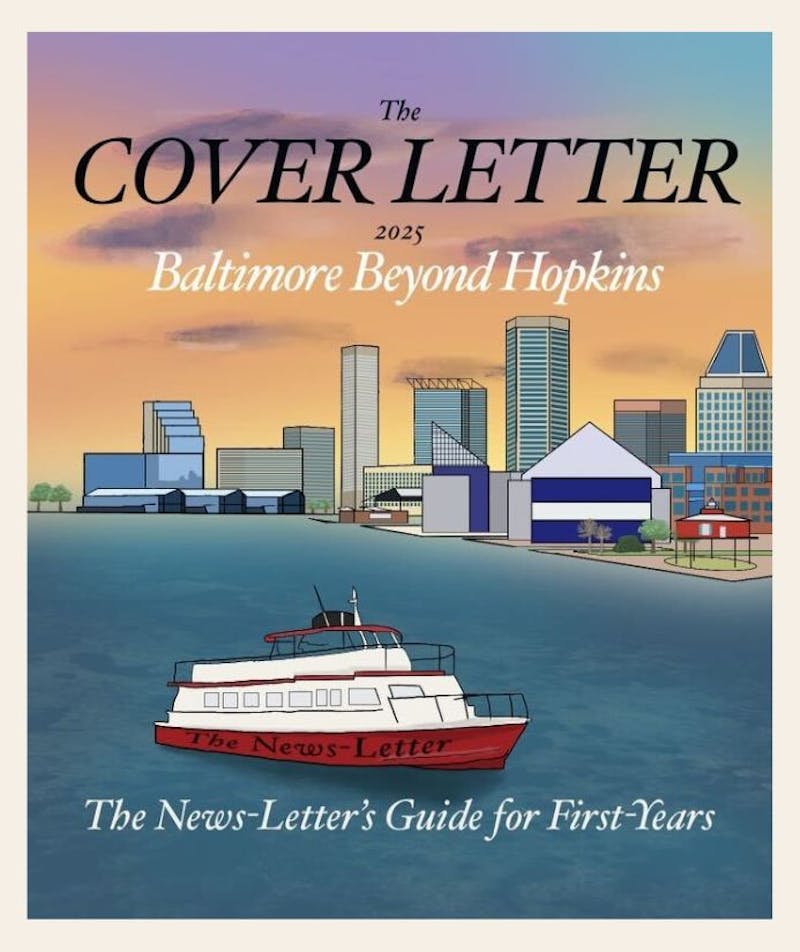Once again we find ourselves back on this campus we call Hopkins. Yet this time around something feels different.
Maybe it's the mounting global food crisis or the large-scale civil and international wars alike raging across every continent. Or quite possibly it's the fact that oil costs hit around $130 a barrel. Indeed the kingdom of heaven runs on righteousness, but the kingdom of Earth runs on oil.
Everything from bicycle sales to airplane tickets have been affected. Even the sale of the electric two-wheeler Segways has risen by more than 50 percent since last year, all because of the price of oil.
And of course you've probably guessed by now that as this column's focus is haute couture, oil has affected the world of fashion as well.
You certainly do not need to be an economics major to realize that more money for gas results in less money for luxury goods, like that pair of jeans you've been eyeing or those Greek-Olympian sandals that were all the craze this summer. Well, it's not surprising that design houses and retail stores are having trouble reeling in their customers because of this change in spending habits. Just driving to the mall will probably run you a couple of dollars. And while this may be bad news for most stores, a few stand alone to profit from the imminent recession.
Swedish powerhouse H&M has a long history of providing fashionable European-inspired clothing for a fraction of the price you'd find elsewhere while still maintaining a relatively high quality.
It appears that H&M has also been keeping an eye on the tickertape, for they have recently added a luxury clothing section to their stores. Racks are being lined with silk sweaters and slim-fit suits, all of high quality but cheaper than you would find anywhere else. This will certainly expand the breadth of their clientele and increase their profits.
H&M has managed to do what no other store has done before. While bringing in truck-loads of fresh, new and stylish clothing every season and selling them at bargain prices, the brand has basically taken monopoly of the ready-to-wear market in the new era where alcohol, the college student's fuel, is cheaper than gas.
Now this is all fine and dandy for us college students because we have a failsafe, inexpensive option to depend on.
But the keen ones among you are thinking, "But what about haute couture?" Who stands to gain in the world of immaculately designed hand-made-to-measure world of high fashion? With oil prices so high and the economy so low, can people still afford the costumes of the couture runways?
Enter John Galliano.
Born on the little island of Gibraltar, Juan Carlos Antonio Galliano-Guillen moved to London and graduated with a degree in fashion design from St. Martin's School of Arts in 1984. Soon after, he started his eponymous label and was named British Designer of the Year in 1987. Leaving for Paris at the age of 30, Galliano quickly rose in the standings with exhilarating shows and fashions.
In 1995, he was chosen to head Givenchy and became the first Brit to lead a French couture house. Within two years he moved to Christian Dior and began a long journey of talented designing and craftsmanship. He was named British Designer of the Year three more times in the '90s and continues his work at Dior presently.
Galliano's couture designs gained fame for being fashionably outrageous. He put out incredibly detailed and voluminous clothing, pieces that were beautiful to look at but impossible to wear off the runway. And so this trend continued for years and years with other designers following suit.
That is until this past June 30, when Galliano revealed his Fall 2008 Couture lineup. He called his collection "fresh couture - restrained and refined." It was a call back to more classic times, when couture was both tasteful and wearable.
Perhaps conservative times call for conservative clothing. Galliano's show signaled an end to overblown clothing and ushered in an era of conventionality. It's no surprise that former supermodel-turned-first lady of France, Carla Bruni-Sarkozy, has chosen to dress in Dior when she meets international delegates and attends state functions.
Designers have chosen to accept the growing economic problems and soaring oil prices and meet them with conservative chic. Other couture houses including Valentino and Jean Paul Gaultier have toned down the extravagance as well, perhaps signaling that showing off luxury and wealth in times like these is tactless.
This trend is an interesting one to follow throughout the next decade or until we sort out our problems. Galliano and others have shown us once again that subtlety, quiet confidence, humility and conservative good taste will eventually trump gaudy extravagance.


